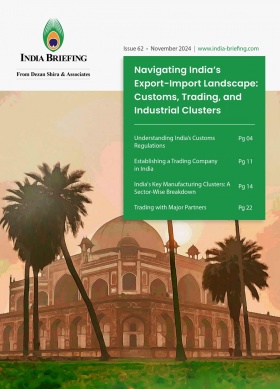Competition Commission of India Introduces Draft Regulations on Predatory Pricing
The Competition Commission of India (CCI) has released the Draft Competition Commission of India (Determination of Cost of Production) Regulations, 2025, inviting public input to refine its approach to predatory pricing under competition law.
The proposed regulations aim to refine cost assessment methodologies used in predatory pricing cases and offer clearer guidelines to distinguish between fair competition and anti-competitive pricing strategies.
India’s national competition regulator, the Competition Commission of India (CCI), has taken a noteworthy step in regulating predatory pricing by introducing the Draft Competition Commission of India (Determination of Cost of Production) Regulations, 2025. This move is part of a broader effort to modernize India’s competition laws under the Competition (Amendment) Act, 2023, ensuring alignment with global best practices.
The proposed regulations seek to update the methodology used for determining production costs in predatory pricing cases, replacing the existing CCI (Determination of Cost of Production) Regulations, 2009.
The consultation period is open from February 17, 2025, to March 19, 2025. Interested stakeholders can submit their feedback via CCI’s online portal.
Understanding predatory pricing and its legal framework
Predatory pricing is an anti-competitive practice in which a dominant firm sets prices below cost to eliminate competitors, with the eventual goal of raising prices once competition is weakened or removed. Section 4(2)(a)(ii) of the Competition Act 2002 explicitly prohibits this practice when it is used to establish market dominance unfairly.
To effectively regulate predatory pricing, the 2025 draft of the Determination of Cost of Production Regulation has proposed modernized cost benchmarks. These benchmarks are structured to align with contemporary economic theories, judicial interpretations, and global competition standards.
Regulating predatory pricing and modernizing cost assessment in India
Since the introduction of the original cost regulations in 2009, market dynamics have evolved significantly in India. The rise of digital markets, platform-based economies, and innovative business models has made it increasingly challenging to differentiate between predatory pricing and legitimate competitive strategies.
By updating cost assessment methodologies, the new regulations aim to provide greater clarity in identifying anti-competitive pricing strategies. Experts in law and economics believe that these reforms will enhance regulatory oversight, ensuring that dominant firms do not exploit their market power unfairly. Additionally, businesses operating in price-sensitive industries are expected to benefit from clearer guidelines, reducing uncertainty in pricing strategies.
Following the consultation period, the CCI will analyze stakeholder feedback before finalizing and notifying the CCI (Determination of Cost of Production) Regulations, 2025. The views of industry leaders, economists, legal professionals, and consumer rights advocates are expected to play a key role in shaping the final regulatory framework.
Understanding predatory pricing in India: Regulations and legal implications
Predatory pricing occurs when a dominant enterprise deliberately lowers prices below the cost of production to drive competitors out of the market. Once competitors are eliminated, the firm raises prices to maximize profits, leading to reduced market competition and potential consumer harm.
Here are some of the legal provisions governing predatory pricing in India:
- Provisions under the Competition Act, 2002
The Competition Act, 2002, enforced by the CCI, includes strict provisions against predatory pricing. Section 4(2)(a)(ii) states that a dominant enterprise is considered to be abusing its market position if it directly or indirectly imposes unfair or discriminatory prices, including predatory pricing.
The law defines predatory pricing as the sale of goods or services below cost with the intent of driving competitors out of the market, ultimately leading to reduced competition.
- Key conditions for predatory pricing to be deemed abuse
For a pricing strategy to be classified as predatory, three key conditions must be met:
- Dominant market position: The firm engaging in predatory pricing must hold a significant market share, giving it the ability to control prices and restrict competition.
- Pricing below cost: The firm must sell goods or services below its cost of production. The CCI typically considers average variable cost (AVC) or marginal cost as the benchmark for assessing below-cost pricing.
- Intent to eliminate competition: There must be a clear intent to eliminate competitors and create a monopoly, rather than simply engaging in competitive pricing.
- Actions taken by the CCI
When CCI identifies predatory pricing, it has the authority to:
- Impose heavy financial penalties on the offending company.
- Order the company to cease predatory pricing practices and take corrective measures.
- Monitor and regulate pricing strategies in specific sectors to prevent market distortions.
Several multinational and domestic companies, including Uber, Ola, Flipkart, and Amazon, have faced regulatory scrutiny in India over allegations of predatory pricing. In August 2024, India’s commerce minister accused Amazon and other e-commerce companies of predatory pricing practices, noting the sector’s rapid rise should not disrupt millions of brick-and-mortar stores operating in the country.
Not all price reductions qualify as predatory pricing. Certain competitive strategies and pricing decisions may be considered legitimate, as discussed below:
- Competitive pricing vs. predatory pricing: If a company reduces prices due to healthy competition without the intent of driving competitors out of the market, it is not considered predatory pricing.
- Promotional discounts: Short-term promotional pricing, introductory offers, or limited-time discounts intended to attract customers do not fall under predatory pricing.
- Government-backed initiatives: In some cases, government subsidies or support programs that result in lower prices may not be classified as predatory pricing.
Conclusion
As India continues to modernize its competition laws, the revised predatory pricing regulations under the CCI’s new framework are expected to provide greater clarity and efficiency in regulating unfair pricing strategies. The ongoing consultation process will help shape a regulatory environment that balances fair competition, consumer protection, and business innovation.
Post the finalization of the CCI (Determination of Cost of Production) Regulations, 2025, businesses and regulatory bodies will have better tools to identify and prevent predatory pricing, ensuring a competitive and transparent market.
About Us
India Briefing is one of five regional publications under the Asia Briefing brand. It is supported by Dezan Shira & Associates, a pan-Asia, multi-disciplinary professional services firm that assists foreign investors throughout Asia, including through offices in Delhi, Mumbai, and Bengaluru in India. Readers may write to india@dezshira.com for support on doing business in India. For a complimentary subscription to India Briefing’s content products, please click here.
Dezan Shira & Associates also maintains offices or has alliance partners assisting foreign investors in China, Hong Kong SAR, Dubai (UAE), Indonesia, Singapore, Vietnam, Philippines, Malaysia, Thailand, Bangladesh, Italy, Germany, the United States, and Australia.
- Previous Article A Guide to MSMEs in India for Foreign Investors
- Next Article Karnataka Global Investor Meet 2025: Over US$115 Billion in Investments Announced, Industrial Policy 2025-30 Unveiled








